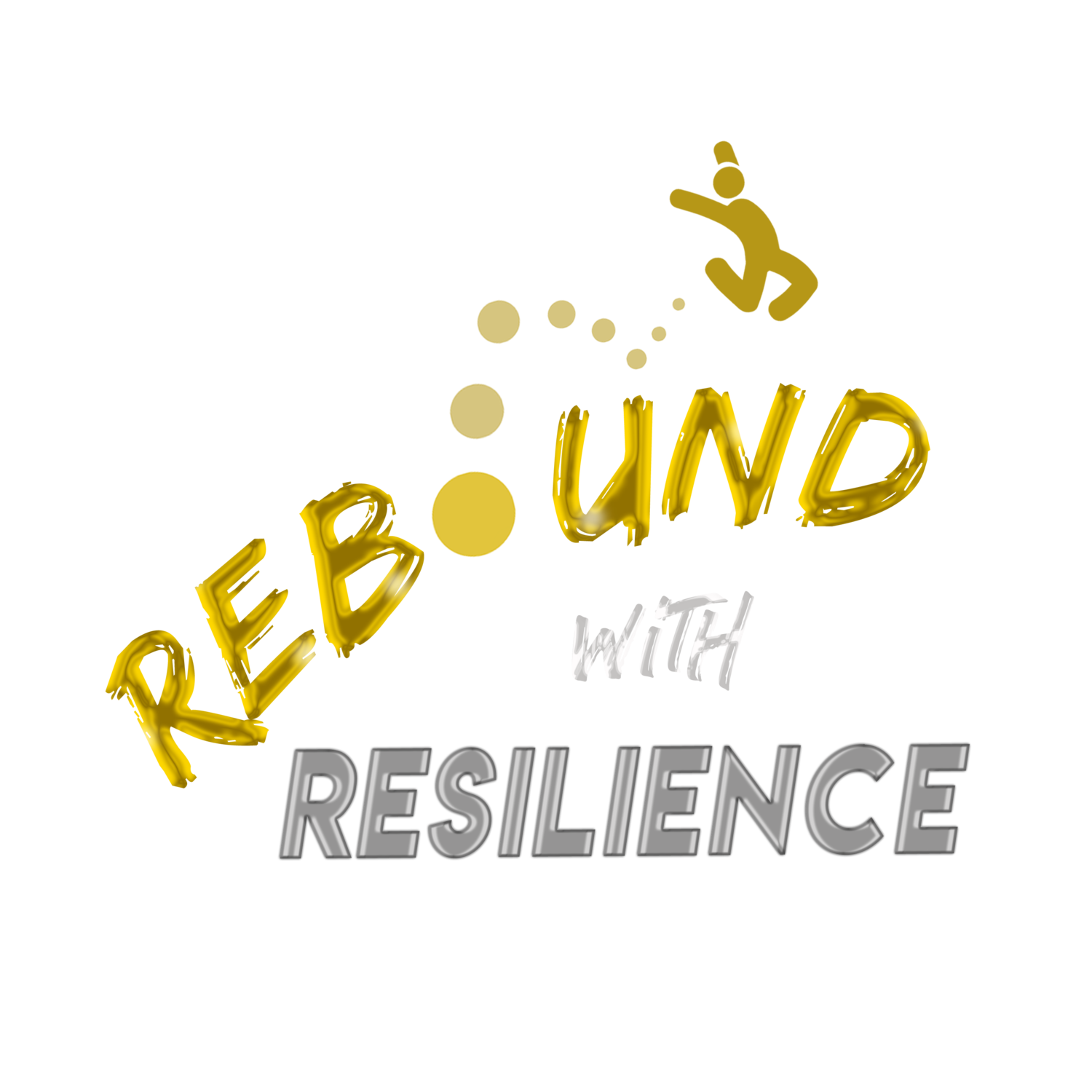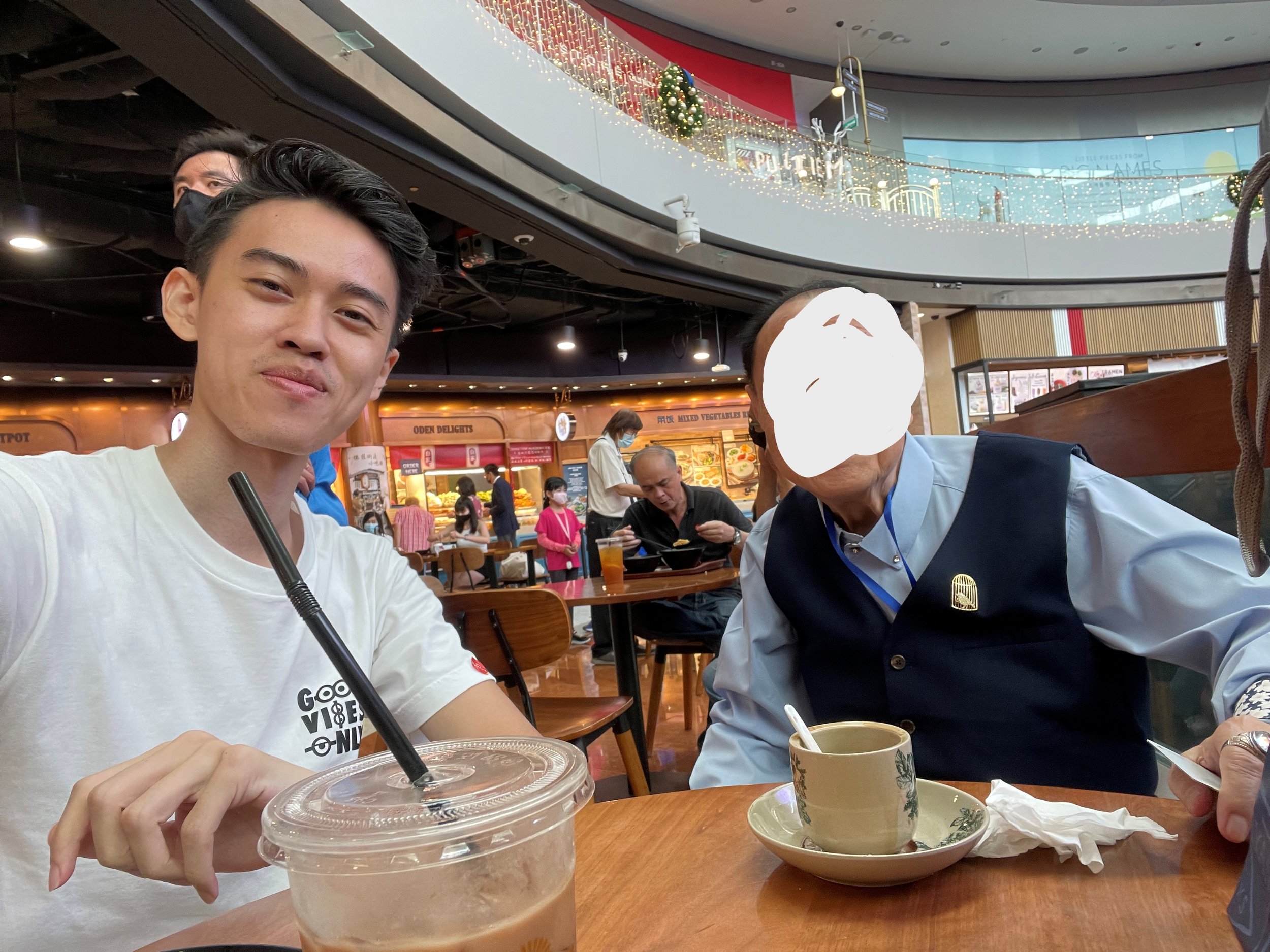I sit opposite a man in his 80s. He wears a stylish vest, a diamond ring and a striking Gold Rolex Daytona (worth 80k at least).
“I don’t care about them (my kids). I am a rich man. I have a girlfriend whom I buy condos for” – he replies me proudly when I ask how he feels about his kids no longer being in contact with him.
He squints and says to me: “I look at you, I think you struggle to make money. No woman will want you”.
I smile. I don’t get offended, and neither do I want to change him. I empathize – he is in his 80s, and probably has a fixed paradigm (belief system) about success and life.
I nod and continue to speak to him. I compliment him on his Rolex, and ask how he accumulated his wealth. I listen for about 10mins.
After that, I ask if he can buy me a meal. He stands up, whips out an MBS member card, and buys me a nice ‘Cai Fan’ (rice with ingredients). Voluntarily, he gets me a drink too.
I finally tell him what I’m doing - I’m on a 2 day homeless journey, where i trekked across Singapore without money and sleep in the open. I do it because I want to learn through discomfort, and deepen my empathy.
He takes out his wallet, hands me $10, and tells me to go home.
I share this story because it deepened my appreciation of empathy (I never thought that a man in his twilight years will have this worldview, but I empathized regardless, and yielded a positive outcome)
Empathy isn’t just applicable when someone is crying and hurting, it’s relevant in any situation, conversation and interaction.
Empathy is relevant especially when an interaction challenges your deeply held assumptions, and your emotions threaten to take control. In these cases, empathy isn’t just a comforter, it is a tool for temperance, resolution and negotiation. This is why empathy also predicts resilience - much of our struggles and problems involve human relations.
Hence, I’m glad to dedicate this article to any educator, student or parent hoping to nurture the heart and skill of empathy, both for themselves and the people they care for.
What is Empathy?
Ask anyone what empathy is, you’ll likely get a simple answer – putting yourself in others shoes. They aren’t wrong.
Yet, I’ll challenge us to go further. Empathy has a fascinating history, which you can read here.
Yet for the purpose of this article, we will discuss 3 most commonly researched forms of empathy:
Cognitive Empathy
Cognitive refers to ‘thinking’. Empathy does involve careful thought and consideration. It involves taking a ‘birds eye point of point of view’, being a spectator to your emotions and situation, and considering all viewpoints as objectively as one can.
(In the video below: Taklah met with a tragic accident in the prime of his career. Yet, he rebuilt his life. The snippet reveals one of his core mindsets that helps him)
Affective Empathy
‘Affect’ refers to feeling. Empathy is about ‘feeling with’ someone, being able recognize, feel and reflect a similar emotion.
Both cognitive and affective empathy need not just be applied to someone alive – it can also be applied to a fictional character or a historical figure.
Compassionate Empathy
This aspect of empathy is lesser talked about, and important to share.
Compassionate empathy involves action – when we feel for someone enough to help or support them. It overlaps with kindness.
Why is this important to cultivate in a school or any organization? Here’s an analogy.
Imagine you’re waking through a forest with a friend. You trip over a log and sprain your ankle. The immediate pain is excruciating. Your friend leans over and says “Oh no, im so sorry, I should’ve looked out for you. I can feel your pain. I sprained my ankle before”. After that, he/she does nothing.
You might say this is an odd example. But the reality is that is happens more often than not. In workplaces or schools, we might feel someone else pain, but decide not to extend help for a multitude of barriers.
Holistic Empathy
It goes without saying then, that a combination of all 3 types of empathy is ideal. In the example above, it would be useful if affective empathy was applied to comfort you while help is being sought.
In other words, it’s the combination of our head, heart and hands that makes empathy most useful.
So how can we develop empathy?
As with most character strengths, while ‘nature’ and genes do play a part, empathy can be developed by ‘nurture’.
In my own example, my Mum told me I cried often for fictional characters when she read children’s stories to me. I remember feeling so sad and indignant for the ‘ugly duckling’ in the story that was ostracized by its own family and rejected by various animals. Later on, I cried tears of joy when it finally found the swans.
It revealed the sensitivity I had. Yet, ‘nurture’ had a part to play too – when I was young, my Mum diligently read to me A LOT with much emotion and animation. It helped me be exposed to a wide variety of situations and emotions.
In my later years, doing charity work in third-world countries and also facing depression/mania nurtured my empathy even further, something that no textbook can ever replace.
Hence, if you’re an educator or parent, take heart and inspiration that empathy CAN be developed intentionally
3 ACTIONS (Steps) of Empathy
Watch the above video. In it, a thought leader in this field ‘Brene Brown’ quotes research from Theresa Wiseman, that identifies 3 key aspects of empathy:
1. Perspective Taking
2. Staying Out of Judgement / Suspending Our Own Bias
3. Recognising, Reflecting and Communicating Emotion
This overlaps nicely with our earlier exploration of 3 types of empathy.
In this case, it presents a specific framework we can teach and practice empathy
Suggestions To Develop Empathy
Here are 5 broad suggestions that will help develop the 3 actions and aspects of Empathy
1. Content and Teaching (Awareness)
The most direct way to nurture empathy is to teach about it. Reading this article for example has likely deepened your knowledge of empathy
Feel free to share this article with students or your kids!
Beyond that, look for videos/podcast that talk about empathy in a learner or age appropriately way.
A quick search on Youtube will present you with multiple videos.
If you enjoy listening, a good podcast to look is ‘Unlocking us’ (embedded) By Brene Brown
When sharing knowledge with others, it helps to provide some guiding reflection questions. For example:
What is something surprising you learnt through this material?
What is one new insight that you can immediately apply? And how can you apply it?
In summary, raising awareness about empathy forms a good baseline, yet it is limited. Kinestatic and visual learners may lose interest or engagement with such a topic, especially when they don’t see personal releavance.
Hence, the next method aims to fill this gap.
2. Immersion and Exposure
One of the most tried and tested ways to develop empathy is immersion – to literally put yourself in the position and lives of the people whom you want to empathize with. (To live, think and feel like they do)
In my case, I went homeless for this reason. Walking alone, sleeping in the open and eating leftovers was a first for me. Yes, some may label this as extreme. Yet, it’s a calculated risk I took, knowing that just reading about the homeless and underprivileged, or trying to empathize with them, will never replace actually living like they do. True enough, the empathy I developed through it is irrreplacable. It gave a renewed drive and fresh creativity in my work.
(Pcitured below: Items brought / Strangers & Hawkers who gave me free food, rides and encouragement / Sleeping at Multistory Carpark / Farms & Coast)
Of course, I’m not suggesting you throw your kids/students to the deep end, or kick them out of the house. The point I’m making is: overprotecting may hinder empathy.
Instead, expose them reasonably: For example, getting them to sign up for VIA (Values in Action) programmes, where they serve a segment of society or organization, or volunteering with them over the weekend.
Volunteering in particular is one of the most direct and effective ways to develop compassionate empathy.
““We must know that we have been created for greater things, not just to be a number in the world, not just to go for diplomas and degrees, this work and that work. We have been created in order to love and to be loved.” ”
Harness The Power of Storytelling
Aside from direct immersion, the next best way for exposure is through storytelling – hearing the emotions, struggles and joys of people with different realities from us.
Storytelling works wonders – science reveals that our brainwaves are in sync from listening to a story. Hence, storytelling is a very effective way to build and infuse empathy.
Here are some forms of storytelling mediums you can use:
Features & Online Content
One great series to check out is ‘Can Ask Meh’, produced by a local digital media company ‘Our Grandfather Story’, where people with different conditions/realities are asked questions about their lives.
These videos can be played as part of CCE lessons, along with guiding class discussions.
Another local channel MOSG, also features interesting and out of the norm personalities
Short Films
Besides feature content, short films are also great storytelling and immersive experiences. Films strive to portray the subject itself, hence giving audience a direct look into their emotions and thoughts.
Here is one award winning one on Demantia (click here) we play in our empathy programmes to good effect.
If you’re looking for films to share or view, check out Vidsee. They have many films, both locally and globally produced.
(Shameless Plug: The one below is a feature they did of me haha, but there are many other features and films on the channel. Check it out!)
Live Talks/Podcasts
Finally, if youre part of a school or organization, you may consider inviting specific speaker profiles to share their struggles and triumphs.
In our assembly sharings, inviting speakers with visually impairment usually gets good responses from students’, who highlight how they empathized with speakers and broke stereotypes.
(Pictured below: Zahier and Steve sharing in schools. Both of them faced blindness in their late teens)
On our podcast, I’ve also invited numerous guests who have faced and overcome various mental health conditions or physical disabilities. Their stories contain powerful lessons in empathy and resilience. I’ve complied a list of links here.
Suggestions to Aid Nurturing Process: Building Holistic Empathy & Reducing Stereotypes
As discussed earlier, one practice of empathy is being able to suspend bias and judgement. To help with this, educators/parents can intentionally frame the learning by asking guiding questions: For e.g ‘What was one assumption you had that was not true after listening to the story? Or ‘What is one thing that surprised you?’
Further, affective empathy can be nurtured by discussing the emotions of characters, subjects or storytellers. For more intention teaching, using a vocabulary list of emotions helps. Studies show that expanding ones emotional vocabulary helps recognize and relate to emotions
4. Developing Emotional Control & Reduced Reactivity Towards Differing Opinions
A big part of practicing empathy is emotional control. Judgement is a major barrier to empathy, which we instinctively do when our beliefs/values are being threatened. This is rooted in our evolutionary defense mechanism, which is inherently reactive.
As such, learning to respond (instead of react), learning to pause and stay neutral, is crucial in practicing empathy
I wrote a comprehensive article here on this topic, along with 10 practical suggestions on emotional control. Check it out here!
5. Embodying & Facilitating Empathy
Finally, and most importantly, we must be good role models. There is nothing more effective than example. Why? 1. We learn by imitation and 2. It gives us more authority, conviction and insights to teach when we LIVE it out ourselves.
From Classroom to Culture
Schools are moving towards the ideal that ‘Every school experience is a CCE experience”, echoed by former education minister Ong Ye Kung. While seemingly idealistic, I believe this is the most effective long-term solution. The alternative to this is touch and go classes, and axioms that students forget the moment the bell rings.
Especially for something as intimate and nuanced as empathy, memorizing its definition will not have a transformative effect.
“Culture eats strategy for lunch, and to nurture empathy we must build an empathic culture”
Having worked with many schools, I am very encouraged when this holistic CCE mindset is adopted. For one school in particular, I noticed a teacher greeting students ‘Good morning’ enthusiastically when they arrived. A further walk down the hall and another teacher caught my attention, asking a student ‘How are you today?’ and bending over to listen intently. “Good, a had a good breakfast” was the joyful reply.
It warmed my heart. While interactions like these seem small, they make a difference. Whoever and wherever you are, you can nurture empathy in both yourself and others, simply by being genuinely interested, curious and kind to others around you.
Creating Safe Spaces for Active Listening & Understanding
A team models the leader. Regardless of whether you’re a school, company or organization leader, your actions have a significant impact on culture.
As such, creating safe spaces for kindness and vulnerability, and a policy of zero tolerance on divisive behaviour, is effective in building personal and collective empathy.
For example, when we conduct empathy programmes, trainers are carefully selected and coached to display vulnerability and build trust. This enables a safe space to conduct activities, such as Walk The Line, where students have to come forward and acknowledge certain phrases being read out. For example ‘I was once bullied’ or ‘I wish my relationship with my parents were better’
A profound and key insight is always noticed here: While this activity is a silent one, while the room was the quietest, communication was the highest. Why?
“Because empathy is ultimately not understood in the mind, but felt in the heart.”
The essence of empathy is simply being able to hold psychological space; to recognize and honour others’ emotions and realities’ without judgement
And because it’s so rarely practiced, doing so can result in profound comfort and liberation for the party that you’re holding space for. In ‘Walk the Line’, many feel liberated and safe to step forward, enabled by the collective empathy.
Hence, as a leader or individual, consider how you can first be vulnerable and authentic to the people/youth you lead, and also set up activities/discussions that facilitate active listening and increased understanding. This can be done together with the earlier suggestions too.
Conclusion
I begun this article with an unliklely encounter with a man, seemingly vastly different from me – in worldview, experiences and conduct.
After about an hour of chatting (chiding at times) and unsolicited advice, it’s finally time to part ways.
I shake his hand and say ‘Thank you’. I may not share the same values, nor will I fully understand his choices, but I am thankful for the meal and the drink. And I made sure he knew that.
I slowly walked away, but I hear his voice call me: ‘Hey’
I turn back. “Yes?”
In a tone strikingly different from the previous one, in a soft, appreciative tone, he said:
“Could you send me the photo you took of us? I’ll like to keep it”
In the end, maybe we aren’t so different after all.
Maybe beyond the money, status and prestige,
We just want to love…
And be loved in return.
.
.
.
(if you enjoyed this article, i believe you’ll like our content on Youtube too! Check out our latest video below and consider subscribing!! :)
Rebound with Resilience is a social enterprise, training and media company specializing in building resilience, mental wellness and enabling peer support culture and skills. We also work with people with disabilities, giving them opportunities to speak in schools. Since inception, we have worked with over 50 schools and organizations and served over 10,000+ participants. Drop us an enquiry anytime into our talks/programmes and media content services!













